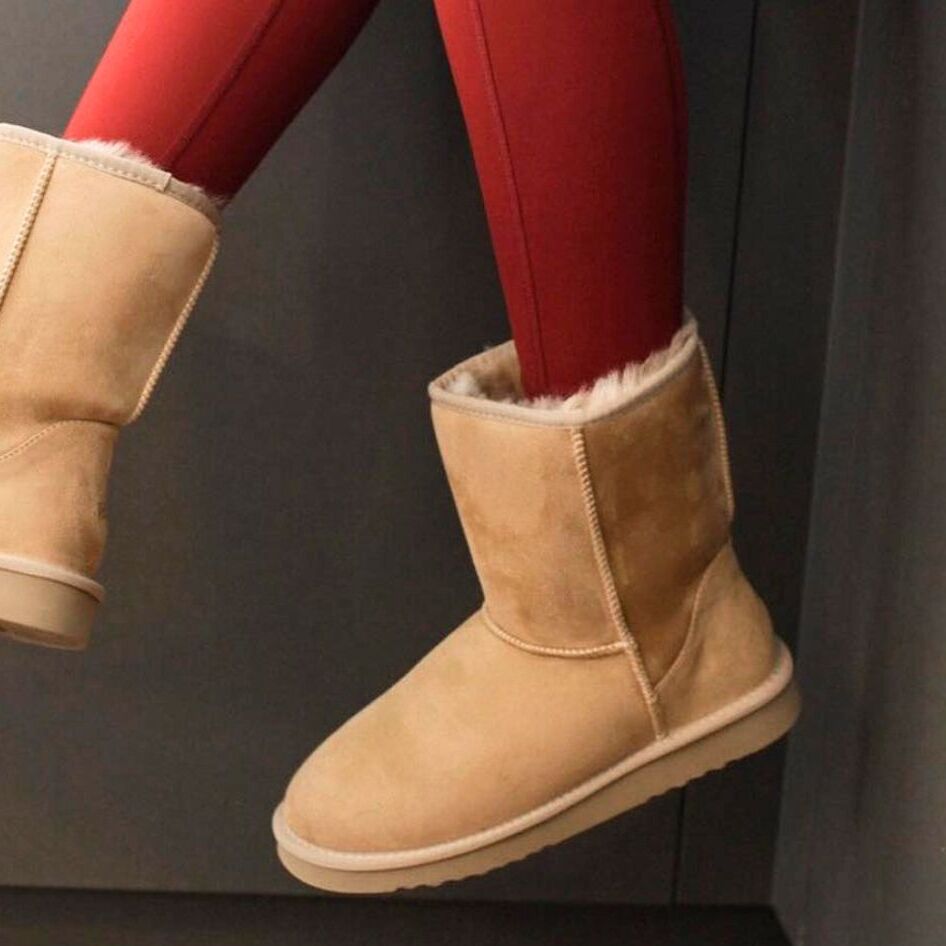The vegan fashion industry is growing. In fact, in 2022, the market for animal-free clothing was valued at roughly more than $40 billion. But sometimes, online and in-person shopping can still be a little confusing if you’re seeking out cruelty-free garments. Knowing what materials to look out for takes a little bit of research, but don’t worry: we’re here to make the vegan clothes shopping process easy for you. Here are seven ways to make sure you’re buying clothing that makes you feel great and doesn’t hurt animals either.
Animal materials to look out for
When you’re shopping for new clothes, a few animal materials to know and be aware of include leather, of course, which can come from many animals but usually comes from cowhide, as well suede, wool, silk (which is made from silkworms), and cashmere.
 Mylo
Mylo
Most of these materials have vegan counterparts, but the alternative leather market, in particular, is booming. To find out more about the many different types of vegan leather out there right now, including mushroom, cactus, and pineapple, follow our guide here.
How to buy vegan-friendly clothes: 7 handy tips
1Feel it out
Sorting out the real animal materials from the faux ones is probably the most common obstacle you will face. Keep in mind that real fur feels more like your hair and has a growth direction, but faux fur feels more like a shag carpet and is sewn in straight rows. Real fur grows out of real animal skin, but synthetic leathers and furs have a fabric backing that is usually white, and you can see the stitching. Good news: faux fur is becoming more popular than ever, as increasingly, the world’s most popular brands have banned the material from their supply chains. Even Canada Goose—known for its fur-lined hooded parkas—has pledged to phase out fur.
2 Know your garments
Another quick way to find cruelty-free materials when clothes shopping is to know the standards. For example, t-shirts are usually cotton, but suits are usually wool, which means when shopping for a suit, you will have to seek out a linen, cotton, or synthetic option. Other common clothing items are shoes and belts, which are usually leather, and might have leather in the sole and/or in the “upper.” Women’s blouses used to be mostly silk but now often feature polyester/rayon blends. Ties, however, are still often made from silk but can be found in silky looks thanks to nylon, rayon, and polyester. Looking for a non-wool suit? Jewish tailors are forbidden from blending wool and linen fibers for religious reasons, so everything is clearly labeled, and there are often wool-only stores, linen-only stores, and cotton-only stores.
 Pexels
Pexels
3 Be careful with vintage
In the past, animal trims were a common addition to garments, so if you’re shopping from vintage stores and you don’t want to compromise your vegan-only clothing pledge, then it’s important to take a little bit of care when making your purchases. That goes double for items such as wool sweaters and coats, leather and felt hats, and fur trims. While pearls are probably plastic or glass, look out for horn and Mother of Pearl, found frequently on shirt buttons, purses, and jewelry.
4 Learn to read garment labels
Learning to read a garment label is a bit like reading assembled furniture instructions, and checking that the label lists all parts of the garment is important. When reading labels, look for categories such as lining, outer shell, upper, and quilting. When no materials list can be found, check for a “Care Instruction” label. Many animal materials need to be dry-cleaned and don’t do well wet or in the dryer, whereas modern synthetics and most plant materials are created for machine washing. Furthermore, look out for blends. For example, a sweater can be 75 percent acrylic and 15 percent mohair. Other common blends are cotton/wool and silk/cotton.
5 Get to grips with fibers
Cotton is basically a vegan’s best friend, as most clothing items can be made using cotton, and many items already are. Beyond cotton, other vegan fibers include linen, polyester, spandex, lycra, ramie, bamboo, hemp, denim, nylon, rayon, Tyvek, PVC, microfiber, cork, acrylic, viscose, and modal. Materials that always involve animal products are wool, alpaca, cashmere, silk, leather, suede, down, maribou, angora, mohair, stingray, alligator, kangaroo, pashmina, and shearling, and anything with the animal’s name in it (such as lambskin).
Important note: while materials like PVC and polyester are vegan, they are not the most sustainable clothing choice, as they are made from plastic. If you’re looking for vegan and environmentally conscious clothing choices, look out for materials like bamboo, hemp, and modal, which are associated with a better environmental impact.
 Pexels
Pexels
6 Don’t forget the details
Sometimes fur, leather, and other things are added onto clothing in places you don’t see until you get home. So, always check for a fur trim, a leather label on jeans, leather pocket details, shell or horn buttons, and fur pom-poms on scarves and hats. Other frequently overlooked accents are leather pulls on zippers and feathers in hats.
7 Buy from local or trusted sources
Nothing beats buying from specifically vegan businesses or from people who are making the clothing themselves. But regardless of where you shop, you can always ask questions and inquire about materials. Researching will help you find shopping guides, vegan companies, and other vegan clothing resources.
For more tips and all-important brand suggestions, find all of our comprehensive VegNews fashion guides here.
Suzannah Gerber ran the vegan fashion shop Costume Shock in Brooklyn from 2010 to 2015 and currently teaches classes on plant-based nutrition in Boston.
For the latest vegan news, read:
JUMP TO ... Latest News | Recipes | Guides | Health | Subscribe








